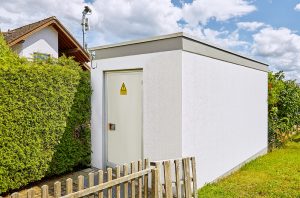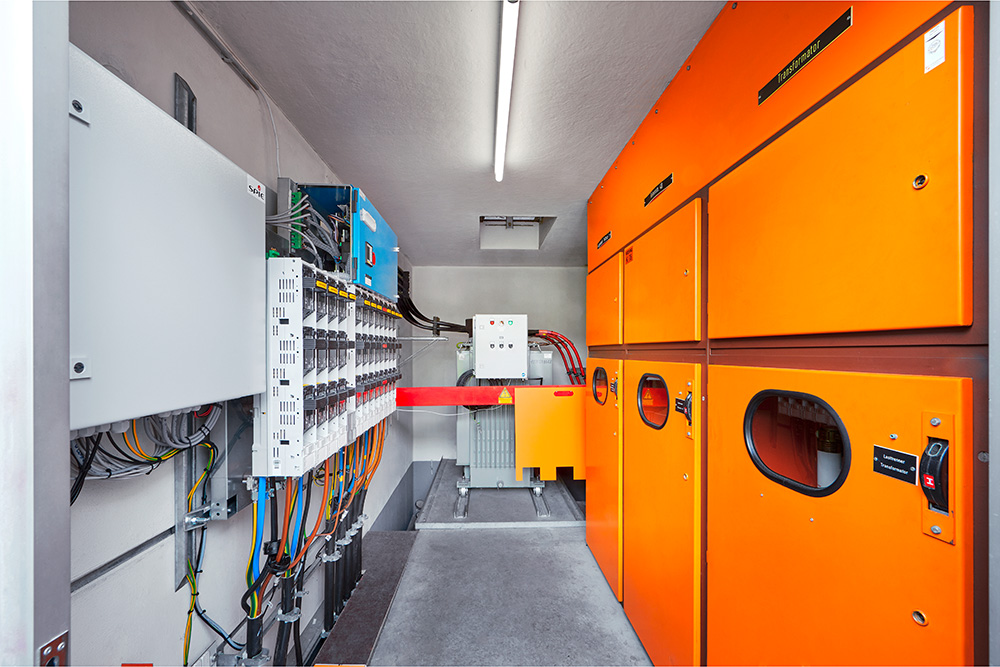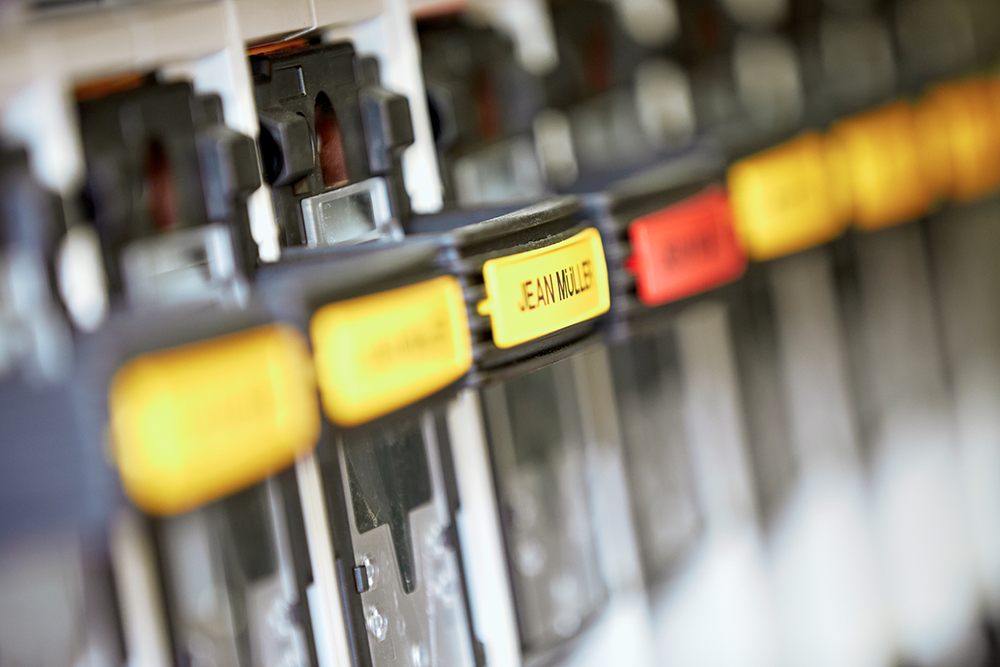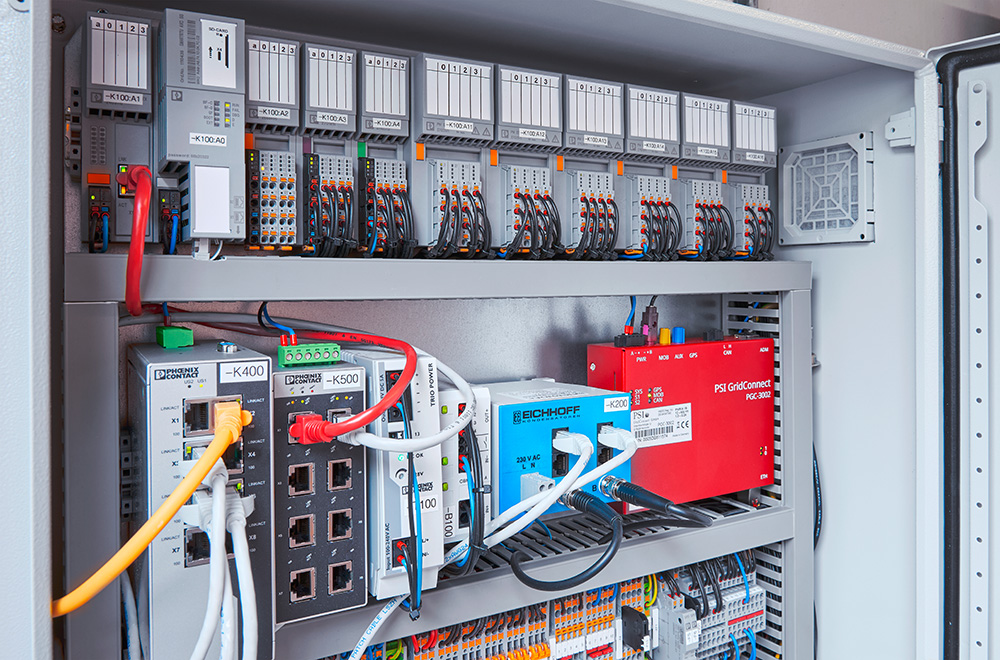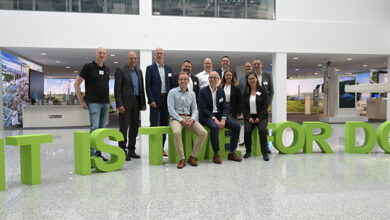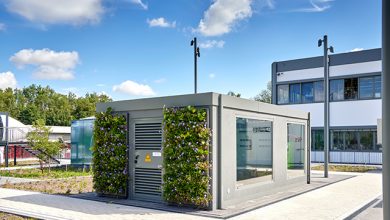INGO is small, rectangular and very red. And it is useful. Because renewable energies can be so exhausting. They make completely new demands on the finely balanced system of the power grids. In Kadenbach in the Westerwald, a joint project is now ensuring clarity in the feed-in jungle.

Large power stations have been humming and buzzing for decades, regardless of whether they are powered by coal, gas, oil, or nuclear power. Year in, year out, they deliver their power into the power grids with an even stability. From high to medium voltage and finally through to the house connection – just how power and grid operators like it.
This is because countless electrical devices need a stable voltage, which they convert into music, clean laundry, or cellphone charges. Almost nothing works in our world anymore without electricity. It would be fantastic if this electricity was generated using wind, water, or the sun instead of having to burn fossil fuels.
But this is where the challenges begin. Decentral generation plants such as wind turbine generators or solar parks operate irregularly, thus burdening the high- and medium-voltage grids with fluctuating yield loads.
Oncoming traffic on the electricity highway
Rising climate awareness and public funding have led to a steadily increasing number of solar systems on household roofs. They feed their solar energy into the public grid. In this way, the consumer becomes the producer. However, the power grids are not designed for this. Decades of one-way streets have suddenly become a traffic artery with oncoming traffic. In the worst case, this feed-in produces so much electricity on the “wrong side of the road” that the grid violates its voltage range. Most of the electrical consumers do not like this at all and either climb out or become damaged.
Kadenbach is a place at the gates of Koblenz. Sunny southern exposure, many new buildings, solar panels on the roof, one or the other electrician in the garage. To date, 27 house builders with their rooftop systems feed around 190 kilowatts more electricity into the low-voltage grid on sunny days than the approximately 188 residential units consume. Kadenbach is thus virtually becoming a power station. The local energy supplier, Energienetze Mittelrhein, naturally knows exactly what is happening in its network from the large power plant via the lines into the town to the distribution stations. But now there is suddenly movement in the low voltage area.
The energy flows which flow back into the transformer stations of the medium voltage supply cannot be monitored. The task is urgent: Measured values must be obtained that ensure transparency. These measured values must be used to automatically adjust the voltage levels in order to exclude mains fluctuations.
The grid becomes smarter
So Phoenix Contact and the >a href=”https://www.jeanmueller.de/de/” target=”_blank” aria-label=” Jean Müller GmbH (opens in a new tab)” rel=”noreferrer noopener” class=”ek-link”> Jean Müller GmbH and the software manufacturer PSI Gridconnect with the Energienetzen Mittelrhein and developed a smart solution: the “Energy Control Interface”. This interface collects the values of the installed measuring sensors, processes them and forwards them to the local network station via a special telecontrol protocol.
The power supply and fuses are located in the interface. The hardware solution for the digitalization of low-voltage outputs can therefore be installed via plug-and-play. If the remote control unit cannot be set up on site, this can also be done using an offline tool or remotely via FTP data transfer.
“In Asset Management, we would like to look to the future in terms of grid expansion and identify critical grid points at an early stage before they arise,” explains Peter Wiacker, Head of Asset Management at Energienetze Mittelrhein, who is also responsible for the power grids in this role. “For this purpose, it is imperative that we acquire measured values from the grid areas that have not yet been digitalized. This is the only way we can determine the effects of, for example, the considerable expansion of photovoltaics and how the power grid is influenced by the increasing number of public and private charging points and smart loads.”
INGO is red
The measuring sensors are installed in two cable distribution cabinets in the bright yellow fuse switchboards PLPlano from Jean Müller. They are connected to the Energy Control Interface. All measured values are passed on to the cloud-based smart grid platform. This platform has the nice name “PSIngo”, short INGO. The red box required for this is also installed on the busbar in the local network distributor. This platform was developed by PSI Gridconnect.
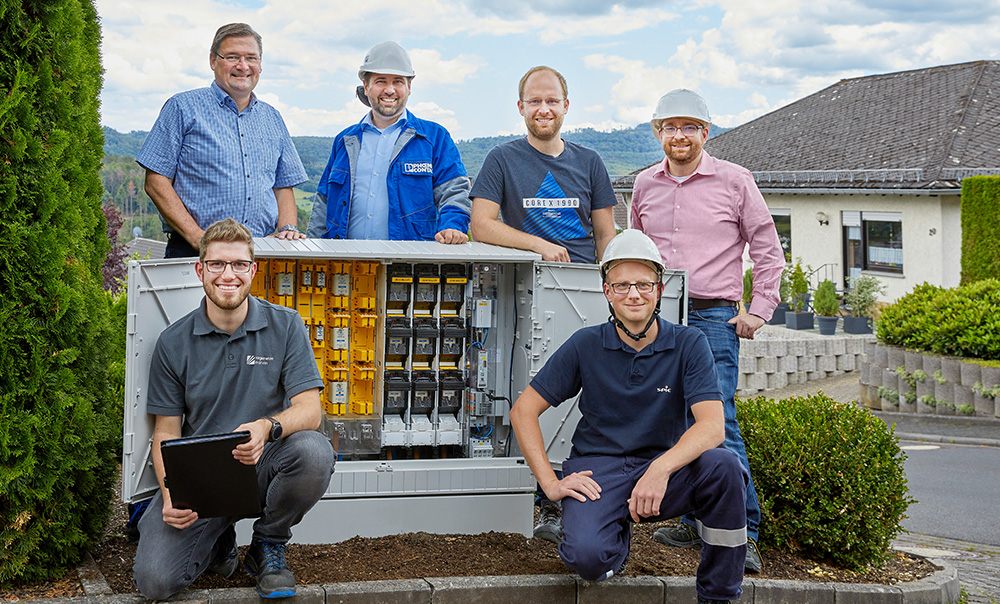
If grid nodes cannot be measured directly, PSInGO calculates them using an algorithm developed by PSI Gridconnect. In this way, the grid conditions in Kadenbach are made transparent to the grid management system. The calculation of the step position of the controllable local grid transformer is carried out locally by PSInGO and is implemented by a PLCnext control device from Phoenix Contact.
If a limit value is exceeded, the system sends notifications to the responsible energy networks Mittelrhein employees, who can intervene manually if necessary. Normally, however, the adjustment of the voltage levels is completely automatic. “Smart solutions such as the controllable local transformer station with wide-range control installed in Kadenbach enable us to master the challenges of the ongoing energy turnaround,” explains Dr. Andreas Hoffknecht, Managing Director of Energienetze Mittelrhein. “The fully automatic compensation of voltage fluctuations ensures a reliable supply of energy to the population in the future.”


